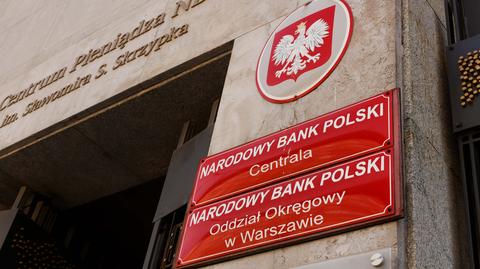Biznes Fakty
Inflation in Poland. NBP publishes projection. „Inflation Report”

According to the predictions in the „Inflation Report,” inflation for this year is estimated at 3.9 percent, declining to 3.1 percent in 2026, and further down to 2.4 percent by 2027. Additionally, the National Bank of Poland anticipates a growth of 3.6 percent for the Polish economy this year.
The report outlines projections for inflation and GDP, which serve as a basis for the Monetary Policy Council’s decisions regarding NBP interest rates. This projection was created under the assumption that NBP interest rates remain unchanged and utilizes data available until June 9, 2025.
NBP inflation projection
It was also mentioned that a rise in the real interest rate within the projection will enhance households’ inclination to save at the expense of consumption, leading to an increased savings rate.
It was noted that simultaneously, the growth rate of disposable income among the population is expected to decline relative to 2024 due to a slowdown in real wage growth, implying that the pace of private consumption from 2025 to 2027 will be moderate (averaging 3.2% year-on-year).
The report indicates that in 2025, the annual price dynamics will range with a 50 percent probability between 3.5–4.4 percent (compared to 4.1–5.7 percent in the March projection). For 2026, the range is projected at 1.7–4.5 percent (down from 2.0–4.8 percent in March). In 2027, the range is expected to be 0.9–3.8 percent (compared to 1.1–3.9 percent in the March projection).
Inflation is anticipated to revert to the range of deviations from the NBP inflation target (2.5% +/- 1 percentage point) by the third quarter of 2025, although it is expected to rise again in the fourth quarter (to 3.6% year-on-year).
It has been indicated that a permanent return of consumer price dynamics to the range (1.5-3.5%) is likely to occur in the first quarter of 2026. The trajectory of inflation in 2025 will be significantly influenced by regulatory measures regarding electricity and natural gas prices (including a reduction in gas prices starting July this year, the reinstatement of the capacity fee, and the end of the maximum price mechanism for electricity from the fourth quarter of 2025).
GDP forecasts
The report states that for 2025, the annual GDP growth rate is expected to fall within a 50 percent probability range of 2.9–4.3 percent (compared to 2.9–4.6 percent in the March projection). In 2026, the range is 2.1–4.1 percent (down from 1.9–4.0 percent in March). For 2027, the range is projected at 1.3–3.7 percent (compared to 1.1–3.5 percent in the March projection).
The growth rate of the national GDP is anticipated to rise to 3.6% in 2025 from below 3% in 2024, primarily driven by a significant influx of EU funds and the KPO.
The GDP growth from 2025 to 2027 will be only slightly supported by foreign demand, due to a limited recovery in the eurozone and ongoing stagnation in the German economy. Following a notable recovery in 2025, GDP dynamics are forecasted to decline in 2026-2027, partly due to the conclusion of spending under the KPO in 2027.
The report further highlights that the anticipated energy commodity prices on global markets for 2025-2027 are lower than those projected in March. Similarly, prices for a significant portion of agricultural commodities have decreased compared to the assumptions made in the March projection.
The report indicates that the balance of uncertainty factors reveals a nearly symmetrical distribution of risks regarding the forecasted GDP dynamics and CPI inflation over the projection horizon. This suggests that the likelihood of inflation and GDP deviating above or below the central projection path is roughly equal.
The main sources of uncertainty contributing to this balance include regulatory changes that impact energy prices in Poland – forthcoming administrative decisions, particularly those concerning the average electricity bill for households, could lead to energy price dynamics and CPI inflation being lower than the central scenario.
Risks
An upward risk to energy prices and CPI inflation in 2027 stems from the proposed implementation of the new CO2 emissions trading system (EU ETS2), which will encompass road transport and housing, not included in the baseline scenario due to the absence of national legislation and potential delays in its rollout.
Another source of uncertainty is the utilization of funds under the KPO. A lower uptake of EU funds in 2025-2026 than projected in the central scenario would lead to a decrease in GDP dynamics within the Polish economy.
<
Źródło



